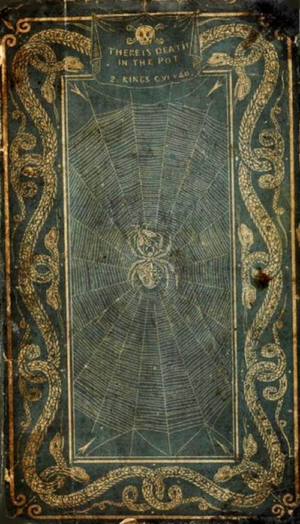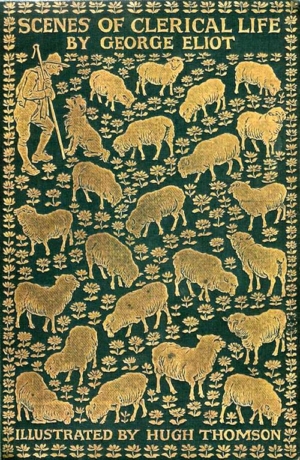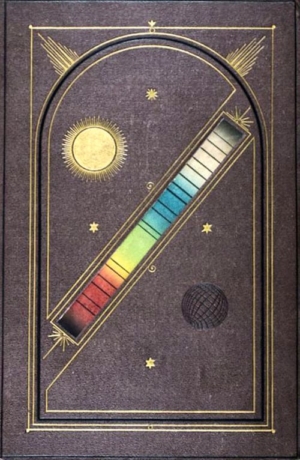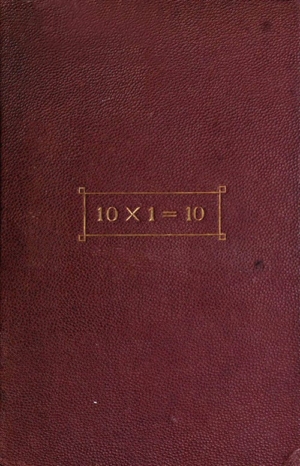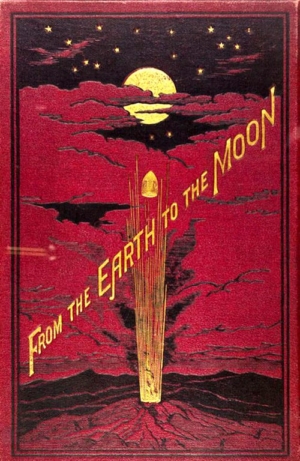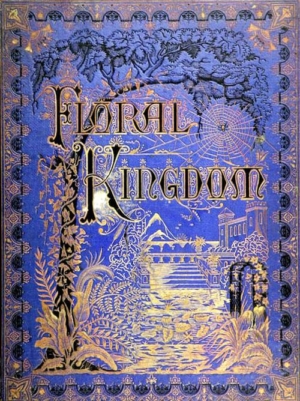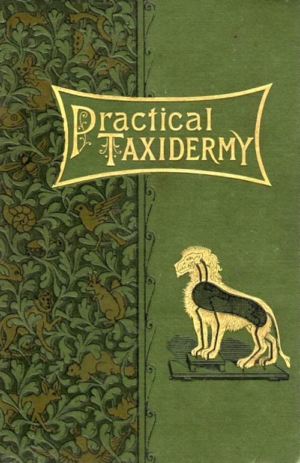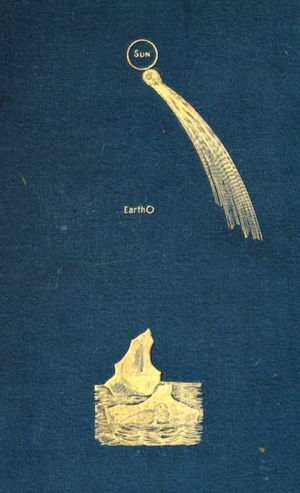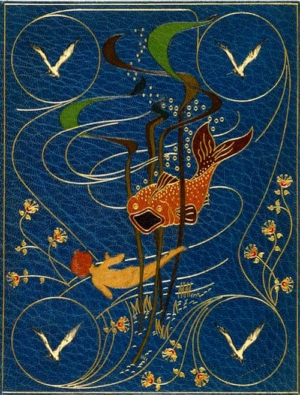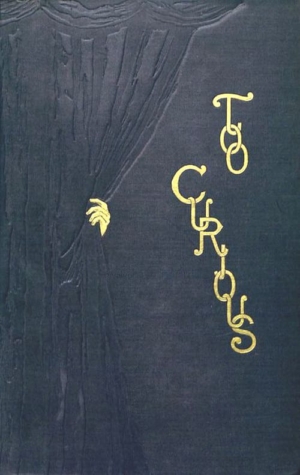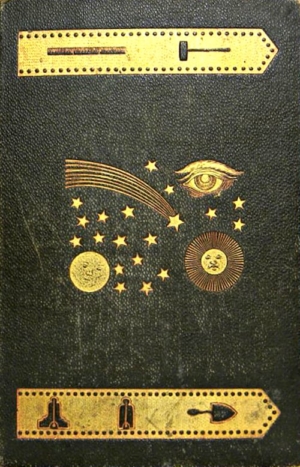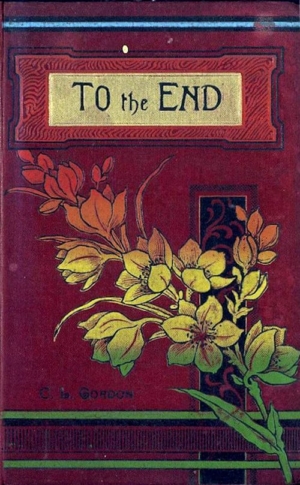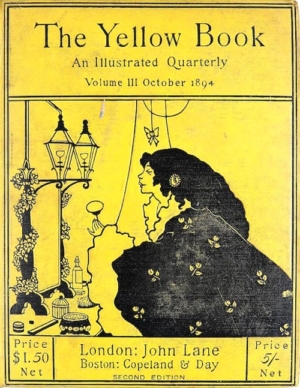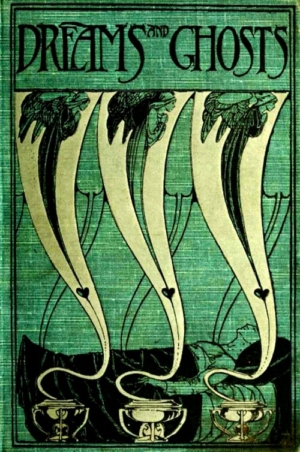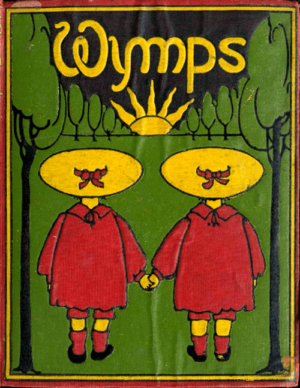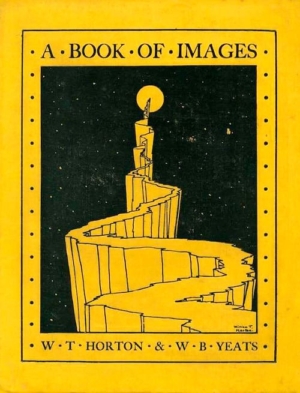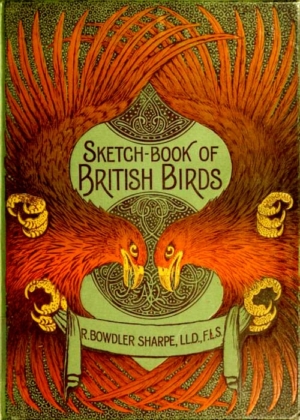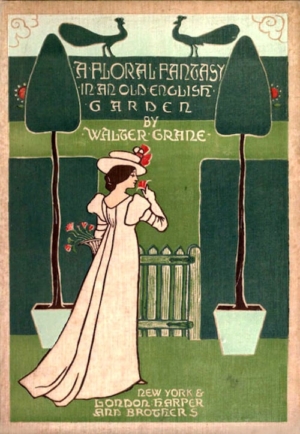Estimated reading time is 18 minutes.
ONCE UPON A TIME, we made things with care, with craftsmanship, even a touch of art. The number of items so made that were used in everyday life would be a long list indeed, but here I am only going to address the front covers of old books. Really old books.
When we see and hold books like this today, it’s not unusual to wonder why they went to so much effort to produce something so few people would read. Even as simple a book as a children’s grade-school primer was made with more care than all but the finest hand-crafted books of today.
Below find covers for 19 books from the 19th century, which when I got my first library card, didn’t seem all that far away! A few of the titles below are known well, but most of them are beyond obscure. Each book is a hardcover, clothbound editions.
The titles are listed chronologically by year of publication. I tried to provide a few words of background on each book or author.
I also looked for sites that had the title in a flip-book format so that interested readers could leaf through the title like it was a “real book” instead of scrolling through a slow-loading PDF file.
The purpose of this article is to entertain — I saw these covers, liked them, and thought that others would also enjoy seeing them. In fact, if you really like these covers and are in search of a hobby to 1) fill the void in your soul or 2) replace all the time you spend on your smartphone, be the first on your block to collect old books just for their covers!
• It’s fun! (It gets you out of the house and going to yard sales and estate sales attending Friends of the Library book sales, and visiting old book stores, Salvation Armies, and antique shops.)
• It educational! (You don’t have to read much more than the publishing information and the prefaces and leaf through the book checking for illustrations to start learning bit and pieces of data with which to amaze your friends at office Christmas parties.)
• It’s affordable! (Most used book shops have little use for obscure pre-WWI titles except filing them in their “collectables” category and hoping somebody notices them.)
So, here are nineteen interesting and attractive covers from some famous and some not-so-famous books of the 19th century. The title of this article refers to the fact that the contents of these books have no bearing on the quality of their covers and why they were selected.
1820
Friedrich Christian Accum
A Treatise on Adulteration of Food and Culinary Poisons
Longman, Hurst, Rees, Orme, Brown & Green
London, 1820
Non-fiction
The full title of Mr. Accum’s book on the title page of the second edition is “A Treatise on Adulteration of Food, and Culinary Poisons, Exhibiting the Fraudulent Sophistications of Bread, Beer, Wine, Spirituous Liquors, Tea, Oil, Pickles, and Other Articles Employed in Domestic Economy. And Methods of Detecting Them.”
“This groundbreaking work marked the beginning of an awareness of the need for food safety oversight. Although popular, this book threatened established practices within the food processing industry and it earned the author many enemies among London food manufacturers. A year after publication, Accum left England after a lawsuit was brought against him.” (Wikipedia)
Comment: For my taste, this is a rather ugly cover—but I certainly can see how it would be very attractive to some book collectors.
To leaf through this book, click HERE.
1855
Jonathan Swift
Voyages de Gulliver dans des Contrées Lointaines
Delarue
Paris, 1855
Fiction
“The 19th century was a time of great change in European bookbinding. Social and educational reform of the previous century had led to increased levels of literacy which resulted in a greater demand for books from a wider public. Vellum and leather had been the traditional binding materials but animal skins were costly. Binders needed a covering that was cheaper, more widely available and quick to produce.
“One solution was cloth and the cover of this French edition of Gulliver’s Travels demonstrates just how suitable it was. After stiffening the cloth with starch, [both] gold tooling and colored stamps similar to those used on leather covers could be applied. Cheaper binding materials, therefore, didn’t mean that decoration had to be compromised.” (Victoria & Albert Museum)
Comment: For my taste, this is an eye-catching design, primarily because the good artwork jumps out of the black background. I would have liked this even more if the designer had figured out a clever way to place the title somewhere in all that black.
1957
George Eliot
Scenes of Clerical Life
William Blackwood & Sons
Edinburgh, 1857
Fiction
Scenes of Clerical Life collects three stories by Mary Anne Evans that had been published anonymously in Blackwood’s Edinburgh Magazine. It was her first fiction book for which she used the pseudonym, George Eliot.
“The stories take place in and around the fictional town of Milby in the English Midlands. Eliot examines the effects of religious reform and the tension between the Established and the Dissenting Churches on the clergymen and their congregations, and draws attention to various social issues, such as poverty, alcoholism, and domestic violence.” (Wikipedia)
“Scene of Clerical Life was immediately recognized, in the words of Saturday Review, as ‘the production of a peculiar and remarkable writer’. The first readers, including Dickens and Thackeray, were struck by its humorous irony, the truthfulness of its presentation of the lives of ordinary men and women, and its compassionate acceptance of human weakness.” (Goodreads)
Comment: For my taste, this is just a so-so cover. It’s too damn busy and I got sleepy counting all those sheep. (yes, it’s a lame pun but it had to be said.)
1869
Henry E. Roscoe
Spectrum Analysis – Six Lectures, Delivered in 1868, before the Society of Apothecaries of London
MacMillan & Company
London, 1869
Non-fiction
“Sir Henry Enfield Roscoe was a British chemist noted for early work on vanadium and for photochemical studies. Roscoe’s scientific work includes a memorable series of researches carried out with Robert Bunsen between 1855 and 1862, in which they laid the foundations of comparative photochemistry.
In 1864, they carried out what is reputed to be the first flashlight photography, using magnesium as a light source. Roscoe’s publications include several elementary books on chemistry that had a wide circulation and were translated into many foreign languages.” (Wikipedia)
Comment: For my taste, this is an attractive cover because I like the overall layout and design. The big, bullet-like shape reminds me of the artwork from the earliest years of science fiction, notably the “space ship” shot from a cannon in Jules Verne’s From the Earth to the Moon.
1871
Col. Frederic Ingham
Ten Times One Is Ten – A Possible Reformation
Roberts Brothers
Boston, 1871
Fiction
Frederic Ingham is a pseudonym for Edward Everett Hale, best known for the Civil War short story “The Man Without a Country,” which was first published in The Atlantic in December 1863.
“It is the story of American Army lieutenant Philip Nolan, who renounces his country during a trial for treason and is consequently sentenced to spend the rest of his days at sea without so much as a word of news about the United States. Though the story is set in the early 19th century, it is an allegory about the upheaval of the American Civil War and was meant to promote the Union cause.” (Wikipedia)
The narrator of the story is one Frederic Ingham, who was presented in such a manner that he took on a life of his own with readers, a life that Hale followed by writing other stories using Ingham as a pseudonym and alternative personality for himself. Ten Times One Is Ten is credited to Ingham but Hale clearly makes himself known as the actual author in the book’s Preface.
Comment: For my taste, this is an interesting cover only insofar as that it is not what it appears to be—a book on basic mathematics. I didn’t even consider it for this article at first because I thought is a grade school primer!
Note that the title on the cover reads “Ten Times One Equals Ten” but on the title page it is “Ten Times One Is Ten.” I’ll bet anyone a buck-three-eighty that the cover was designed by someone who did not read the text (a far more common event in publishing than you might think).
To leaf through this book, click HERE.
1873
Jules Verne
From the Earth to the Moon
Sampson Low, Marston, Low, & Searle
London, 1873
Fiction
“Jules Gabriel Verne was a French author who pioneered the genre of science-fiction. His 1865 tale of a trip to the moon is great fun, even if bits of it now seem, in retrospect, a little strange: the rocket ship gets shot out of a cannon? To the moon? Goodness!
“But in other ways, it’s full of eerie bits of business that turned out to be very near reality: Verne’s cannon was named the Columbiad, the Apollo 11 command module was named Columbia. Apollo 11 had a three-person crew, just as Verne’s did. And both blasted off from Florida! (GoodReads)
Comment: For my taste, this is one of the most attractive covers in this article—but I’ve been a sucker for fantasy in all its forms since childhood. The yellow-and-red-against-black is eye-catching and evokes flowing lava, which given that the drawing looks more like a volcano than a spaceship launching is appropriate.
When Verne and shortly after, H. G. Wells, were writing these stories, contemporary artists had no experience with this type of literature and the vision it required. Consequently, most of the art that accompanied it was scientifically and technologically crude but in a manner that is easy to see as charming 150 years later.
See Henry E. Roscoe’s Spectrum Analysis in 1869 above.
1877
Cordelia Harris Turner
The Floral Kingdom – Its History, Sentiment, and Poetry
Moses Warren
Chicago, 1877
Non-fiction
According to its title page, The Floral Kingdom is “A dictionary of more than three hundred plants, with the genera and families to which they belong, and the language of each illustrated with appropriate gems to poetry. By Mrs. Cordelia Harris Turner. With an autograph letter and introductory poem by William Cullen Bryant. And a practical treatise for amateurs on the cultivation and analysis of plants.”
Comment: For my taste, this is a gorgeous cover, if only for the black against the royal (?) blue backdrop. Rather than a book on the genera and families of plants, this looks like an invitation to enter an enchanted garden where one might meet an elf, fairy, or faun.
Initially, I thought the border over-busy and unnecessary. So I “erased” it using the GNU Image Manipulation Program (GIMP), leaving the primary image surrounded by a broad blue border. I was wrong, as the plainer cover was far less effective and evocative without the busy border!
1878
Montagu Browne
Practical Taxidermy – A Manual of Instruction to the Amateur in Collecting, Preserving, and Setting Up Natural History Specimens of All Kinds
The Bazaar
London, 1878
Non-fiction
“This comprehensive manual on early taxidermy is much sought after by modern taxidermists for its wealth of detail and historical content. The author was the curator of the Town Museum, Leicester, and considered to be one of England’s foremost taxidermists. He intended this book to be an introduction to a delightful art, which must be wooed with patient determination and loving pains until technical skill invests it with beauty.” (Google Books)
Comment: For my taste, this is one of the lesser covers here, but I was intrigued by the critter: which is supposed to be a lion but reminds me of a hyena. (Except for the innards, which remind me of a pickle or a turd with pipe cleaners.)
1883
Ignatius Donnelly
Ragnarok – The Age of Fire and Gravel
D. Appleton & Company
New York, 1883
Non-fiction
“Ragnarok proposes that a comet impacted the Earth several tens of thousands of years ago; the impact produced the Drift layers of gravel which have been attributed to the Ice ages; this event destroyed a civilization which had high technology, a civilization which vanished completely except for some myths; the disaster was accompanied by catastrophic fire followed by years-long cloud cover and extreme cold.
“Humanity survived only by hiding in deep caves; when they re-emerged they had to restart civilization from scratch. Donnelly provides extensive geological, archeological, astronomical and mythological evidence for this theory. The book is not academic and often sensationalistic, but his populist style does not seem to detract from the argument.” (Sacred Texts)
Comment: For my taste, this is rather amateurish but with a Dada-ish collage flavor to it (imagine it in black and white with a few words in German accompanying it) decades before the Dadas.
To leaf through this book, click HERE.
1886
Charles Kingsley
The Water Babies – A Fairy Tale for a Land Baby
Macmillan & Company
London, 1886
Fiction
“The Water Babies is a children’s novel by the Reverend Charles Kingsley. Written in 1862-1863 as a serial for Macmillan’s Magazine, it was first published in its entirety in 1863. The book was extremely popular during its day and was a mainstay of children’s literature through the 1920s, but eventually fell out of favor in part due to its prejudices against Irish, Jews, Catholics, blacks, Americans, and the poor.
“In the style of Victorian-era novels, The Water Babies is a didactic moral fable about a young chimney sweep, Tom, who falls into a river and becomes a water baby, guided by moral teachers through lessons and adventures, eventually earning the right to become human again and being united with an upper-class girl Ellie who had also become a water baby.” (Biblio)
Comment: For my taste, this is a killer cover, if only for the gracefully swirling line (the movement of the water?) that connects all the elements of the design. Like the Jonathan Swift cover above, the title is nowhere to be found. And the four whites V’s in the circles in the corners are birds of prey, who no doubt find water babies a tasty treat.
1888
Edward John Goodman
Too Curious
Bentley & Son
London, 1888
Fiction
Here is an excerpt from Too Curious: “It was as though some other mind had entered my brain, and was talking with my own mind, speaking words that answered mine—words over which my will had no command, unanticipated and foreign to my thoughts, as much as though they were uttered by some other visible and palpable entity.”
Comment: For my taste, this is one of the best covers on this page. The design is simple: the curtain is embossed into the cover rather than drawn or painted while the sinister hand pulling it back is gold. That’s all that was needed: this is the one cover in this article where the title could have been left off and it would have added to the effect of the design, leaving anyone seeing it curious as to its contents.
1889
Moses Wolcott Redding
Standard Ahiman Rezon and Blue Lodge Guide
Redding & Company
New York, 1889
Non-fiction
According to various sites on the internet offering facsimiles of this book for sale, “This work has been selected by scholars as being culturally important and is part of the knowledge base of civilization as we know it. Scholars believe, and we concur, that this work is important enough to be preserved, reproduced, and made generally available to the public.”
I could find no other information except that Mr. Redding frequently wrote about Freemasonry.
Comment: For my taste, this is a neat cover design. Like Ignatius Donnelly’s Ragnarok in 1883 above, it has the look of a Dada collage but combined with a taste of the alchemist or even a necromancer. I could see this as the cover of one of the three books of spells in the 1992 movie Army of Darkness. But it also looks kinda like a hokey cover one might find on a book about the Illuminati of Freemasonry.
1890
C. Lockhart Gordon
To the End
John F. Shaw & Company
London, 189o
Fiction
C. Lockhart Gordon was a writer of Christian fiction for girls.
Comment: For my taste, this is a great cover design! It reminds me of a photograph collectors album of the 19th century, which was an enormously popular hobby at the time. The overall design of the cover—the title, the horizontal lines, the dark colors—balances the yin with the powerful yang of the flowers. It doesn’t look like the cover of a book intended for young girls being raised to be good Christians.
To leaf through this book, click HERE.
1894
Anthology
The Yellow Book – An Illustrated Quarterly, Volume III
John Lane
London, 1894
Fiction, non-fiction, art
“The Yellow Book was a British literary periodical that was published in London from 1894 to 1897. It was a leading journal of the British 1890s; to some degree associated with Aestheticism and Decadence, the magazine contained a wide range of literary and artistic genres, poetry, short stories, essays, book illustrations, portraits, and reproductions of paintings.
“Aubrey Beardsley was its first art editor, and he has been credited with the idea of the yellow cover, with its association with illicit French fiction of the period. Though Oscar Wilde never published anything within its pages, it was linked to him because Beardsley had illustrated his Salomé and because he was on friendly terms with many of the contributors.
Moreover, in Wilde’s The Picture of Dorian Gray, a major corrupting influence on Dorian is the yellow book which Lord Henry sends over to amuse him after the suicide of his first love.
“The Yellow Book differed from other periodicals in that it was issued clothbound, made a strict distinction between the literary and art contents (only in one or two instances were these connected), did not include serial fiction and contained no advertisements except publishers’ lists.” (Wikipedia)
Comment: For my taste, this is okay. I have long been a fan of Aubrey Beardsley (and tried to emulate him for a while in college), but this cover is bland. Had the panel at the top been yellow letters against a black background it would have been a more powerful and effective design. But then it would have lost both the Japanese woodcut look and much of its eroticism.
1897
Andrew Lang
The Book of Dreams and Ghosts
Longmans, Green & Company
London and New York, 1897
Non-fiction
Of his belief in ghosts, Andrew Lang wrote in the third person, “The author has frequently been asked, both publicly and privately: ‘Do you believe in ghosts?’ One can only answer: ‘How do you define a ghost?’ I do believe, with all students of human nature, in hallucinations of one, or of several, or even of all the senses.
But as to whether such hallucinations, among the sane, are ever caused by psychical influences from the minds of others, alive or dead, not communicated through the ordinary channels of sense, my mind is in a balance of doubt. It is a question of evidence.” (GoodReads)
Comment: For my taste, this is a great design, even if the angels in the smoke of the burning braziers tempers the potency of the dreams “dreams and ghosts” promised in the title. But then this is not a collection of creepy tales but Lang’s look at the supernatural and the paranormal.
To leaf through this book, click HERE.
Evelyn Sharp
Wymps and Other Fairy Tales
New York and London
John Lane, 1897
Fiction
“Evelyn Jane Sharp was a key figure in two major British women’s suffrage societies, the militant Women’s Social and Political Union and the United Suffragists. She helped found the latter and became editor of Votes for Women during the First World War. She was twice imprisoned and became a tax resister. An established author who had published in The Yellow Book, she was especially well known for her children’s fiction.” (Wikipedia)
Comment: For my taste, this is a perfect cover design. It’s simple, clean, and strong, the reds and yellows jumping out of the black and green backdrop. The one-word title makes me wonder if it refers to the two darling children holding hands in the foreground or to something waiting for them at the end of the row of trees they are facing.
1898
W. T. Horton
A Book of Images
The Unicorn Press
London, 1898
Non-fiction
“A collection of both mundane and mystical scenes, A Book of Images is an odd work by W. T. Horton. Mystic, illustrator and author, Horton created minimalistic black and white drawings similar (but not as good, honestly) to those of Aubrey Beardsley and Charles Ricketts.
Images of symbolic urban visions and religious characters are introduced by none the less than Irish poet W. B. Yeats, who sponsored Horton’s initiation into the occult organization the Golden Dawn and reference the illustrator in his poem about Golden Dawn called ‘All Souls’ Night’.” (Socks Studio)
Comment: For my taste, this is one of the more alluring covers on this page, as it makes me want to walk that windy clifftop trail and peak over the edge and see what’s below. The art looks like it’s from an underground comic book from the early 1970s, although there would be something other than a baying wolf at the end of the trail, perhaps something psychedelic.
To leaf through this book, click HERE.
Richard Bowdler Sharpe
Sketch-Book of British Birds
Society for Promoting Christian Knowledge
London, 1898
Non-fiction
“Richard Bowdler Sharpe was an English zoologist and ornithologist who worked as curator of the bird collection at the British Museum of natural history. In the course of his career, he published several monographs on bird groups and produced a multi-volume catalog of the specimens in the collection of the museum. He described several new species, including Sharpe’s longclaw (Hemimacronyx sharpei) and Sharpe’s pied-babbler (Turdoides sharpei) which are named in his honor.” (Wikipedia)
Comment: For my taste, this is perhaps my favorite cover here—for the design, for the rhythms, for the colors, for the birds.
To leaf through this book, click HERE.
1899
Walter Crane
A Floral Fantasy in an Old English Garden
Harper & Brothers
London, 1899
Fiction
“Walter Crane is considered to be the most prolific and influential children’s book creator of his generation and, along with Randolph Caldecott and Kate Greenaway, one of the strongest contributors to the child’s nursery motif that the genre of English children’s illustrated literature would exhibit in its developmental stages in the latter 19th century. His work featured some of the more colorful and detailed beginnings of the child-in-the-garden motifs that would characterize many nursery rhymes and children’s stories for decades to come.” (Wikipedia)
Comment: For my taste, this is a lovely cover, the design of which reminds just a wee bit of some of Disney’s animated films and Warner Brothers’ cartoon shorts of the 1950s. As much as I would have liked to close this article with Richard Bowdler Sharpe’s British birds butting heads (the penultimate entry above), I had to keep this one.
To leaf through this book, click HERE.
Postscript
As with many other handicrafts, there has been a revival of interest in well-made clothbound books in recent years, some handcrafted. But that’s another story . . .
FEATURED IMAGE: I actually went looking for an appropriately large image of a stack of ancient books but when I saw this my search was over. As I wanted a touch of the old, I converted the original, lovely color image by Mystics Art Design (courtesy of Pixabay) to the black & white image that is the featured image at the top of this page.
Mystically liberal Virgo enjoys long walks alone in the city at night in the rain with an umbrella and a flask of 10-year-old Laphroaig who strives to live by the maxim, “It ain’t what you know that gets you into trouble; it’s what you know that just ain’t so.
I’ve been a puppet, a pauper, a pirate, a poet, a pawn, and a college dropout (twice!). Occupationally, I have been a bartender, jewelry engraver, bouncer, landscape artist, and FEMA crew chief following the Great Flood of ’72 (and that was a job that I should never, ever have left).
I am also the final author of the original O’Sullivan Woodside price guides for record collectors and the original author of the Goldmine price guides for record collectors. As such, I was often referred to as the Price Guide Guru, and—as everyone should know—it behooves one to heed the words of a guru. (Unless, of course, you’re the Beatles.)

